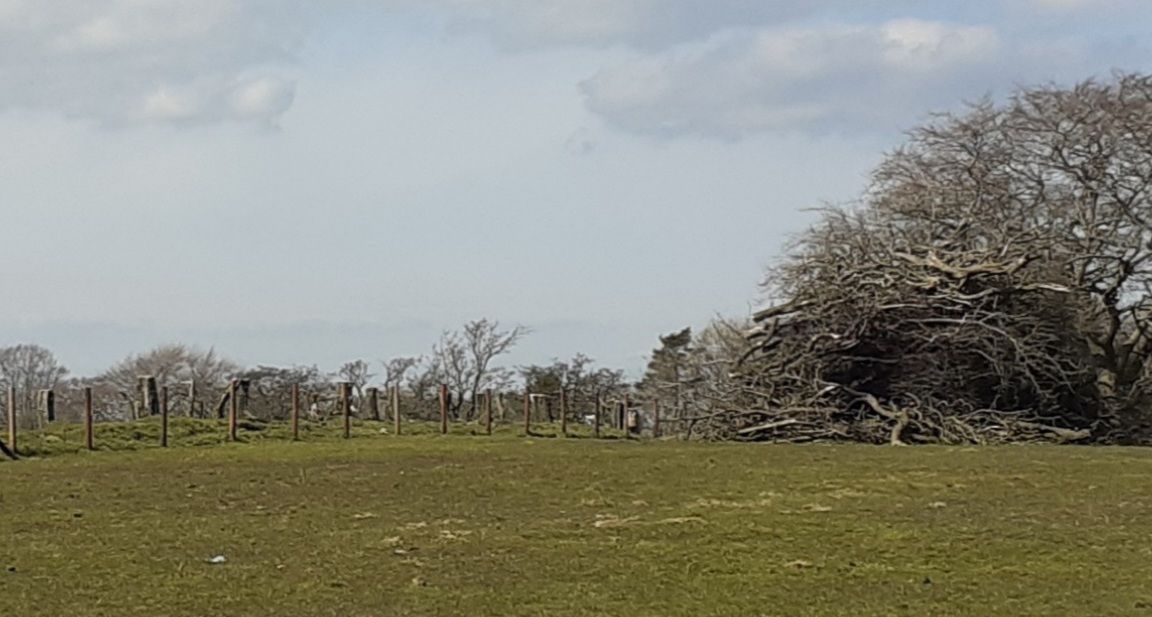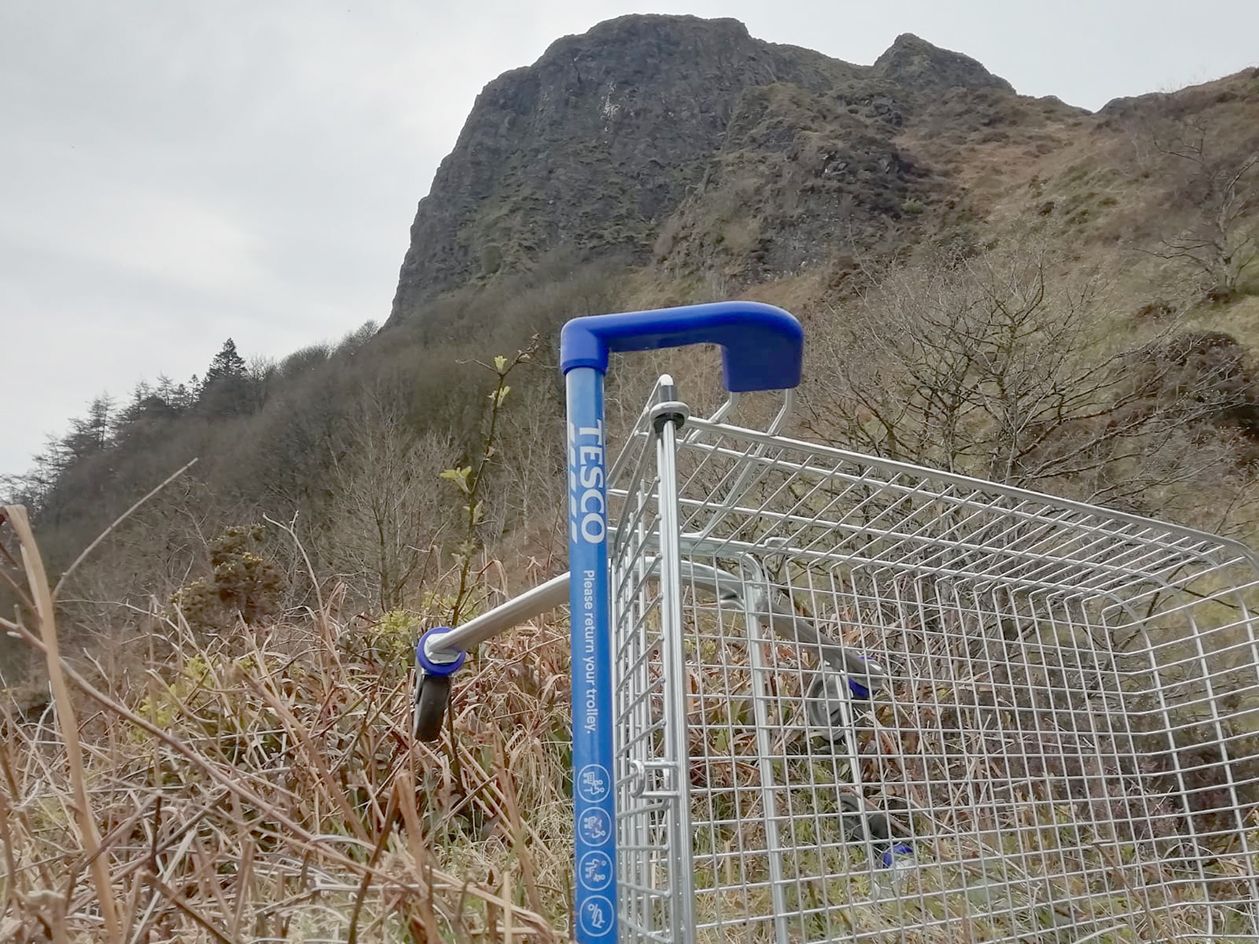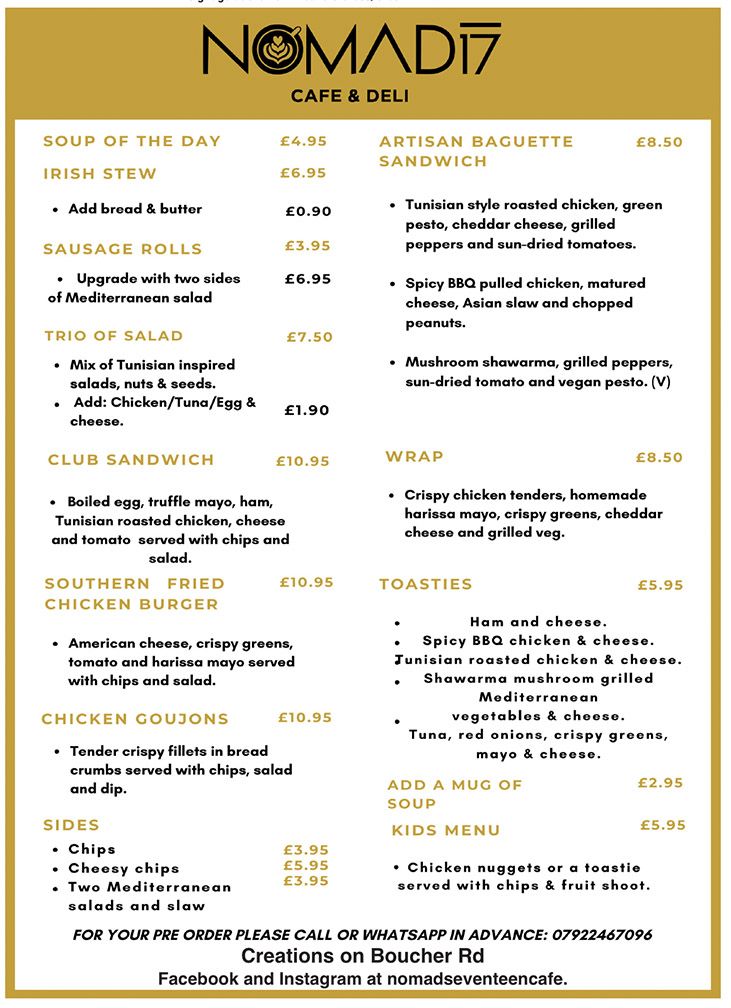Napoleon’s Nose is one of Belfast’s most famous landmarks – and for Dúlra its majesty lies not only in its historical significance, but in its remote beauty. So remote in fact that the silken kestrel – which last week sadly joined Ireland’s red list of endangered birds – still nests on the cliffs here.
So Dúlra went this week in search of the falcon which was, just a decade ago, our most common bird of prey. And as he walked through the brambles, he couldn’t believe what he found before him – not a rare bird or animal, but something much more inexplicable.
Dúlra’s going to enter it into the Guinness Book of Records as Ireland’s highest shopping trolley.
Here it is with Napoleon’s Nose as a backdrop, which rises 1,200 feet above Belfast. That means the trolley sits at a cool 1,000ft above sea level. Surely it’s worth a mention in the famous book, eh Guinness?
Dúlra can only guess the Herculean effort required to take it to this point. Trollies like this Tesco one are fitted with swivel wheels to help them glide effortlessly across supermarkets’ sleek floors. But on the thick, muddy and bramble-laden foothills of Cave Hill, they’re about as much use as a pair of ballet shoes. In fact it’d be easier to carry the trolley on your shoulder than push it across this terrain.
The nearest Tesco is about two miles away in Abbeycentre – but from there it’s uphill all the way. Dúlra seriously doubts someone took it here directly, filled with their weekly shop. But who knows? Maybe they enjoyed a picnic below Napoleon’s Nose, or maybe it was an extreme fitness challenge, on a par with a desert marathon.
Dúlra tried to shift the trolley in the vain hope that somehow he could get it off the hill, but it was impossible. It felt like a ton weight – they’re made to be sturdy so they don’t topple over. Each trolley costs about £100 to make – but there’s no known second-hand trolley market (unlike, say, pallets), so they aren’t stolen to order, but just for convenience. If you can call dragging one 1,000ft up Cave Hill a convenience.
Still, quite a few go missing every year – in fact £500 million worth worldwide – and many end up in our own Lagan.
For Dúlra, its presence was both a conundrum and a cause for sadness – that even 1,000ft above Belfast, we still manage to dump our unwanted things on nature.
Thankfully, just as Dúlra was turning to go home, the kestrel, pocaire gaoithe, appeared overhead, scanning the long grass below for mice.
It’s now one of 54 birds on the Irish red list, a rise of 46 per cent in a decade.
We’d be off our trolleys to let it disappear from the Belfast hills.
• It’s an all-to-familiar scene – a pile of twisted branches in the middle of a field, alongside a shorn border where a hedgerow once stood.

Dúlra took this picture just outside West Belfast this week as yet another of our world-famous hedgerows vanishes – and this one was particular beloved of birds.
It’s happening all around us. Dúlra’s lost count of the number of hedgerows that have been hacked down or cut out in the immediate outskirts of Belfast in the last couple of years, often to be replaced by a wire fence. It’s actually happening at a time when we’re boasting about the millions of trees we’re planning to plant in the ‘least forested country in Europe’.
Dúlra doesn’t blame the farmers – they’re trying to make a living and keep bread on the table. Dúlra might well have done the same if he were in their position – trying to make their land more productive is commendable.
Currently trying to make it compulsory in CAP that our Department of Agriculture will not be able to discount landscape features such as hedges and scrub when it comes to land eligibility. Council of Ministers fighting against this. Where does @McConalogue stand on it?
— Luke 'Ming' Flanagan (@lukeming) April 22, 2021
But government should not only be vowing to plant more trees, but saving the few that we have in the fabulous nature corridors have been an integral part of the Irish landscape for hundreds of years.
* If you’ve seen or photographed anything interesting, or have any nature questions, you can text Dúlra on 07801 414804.








